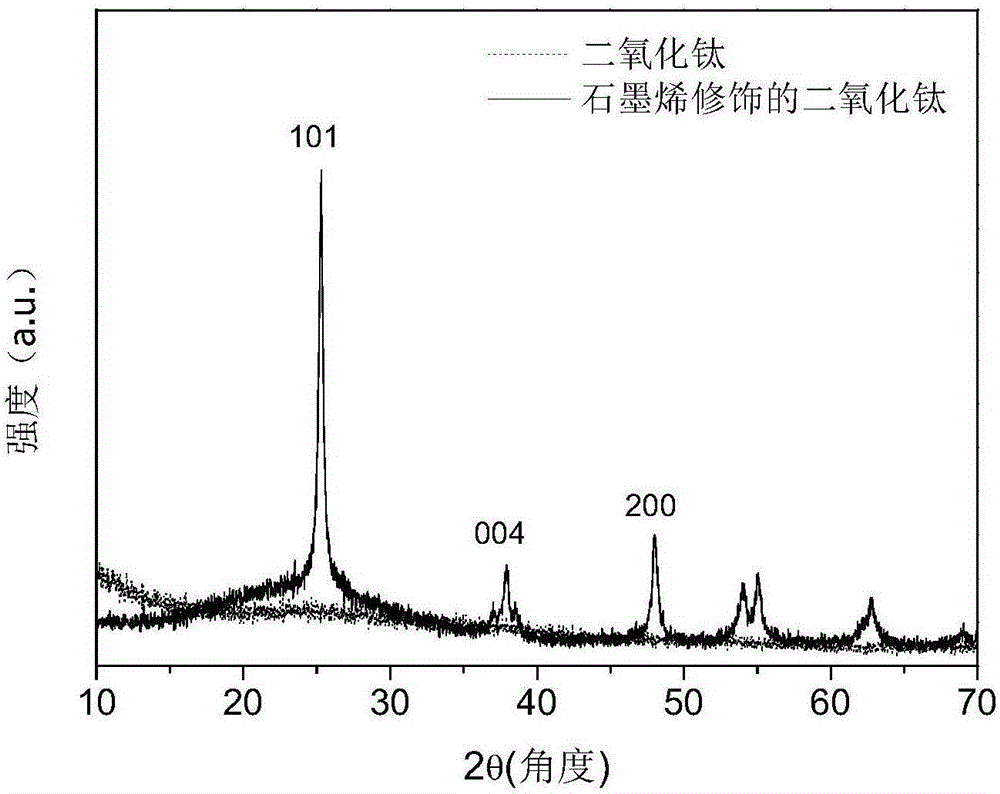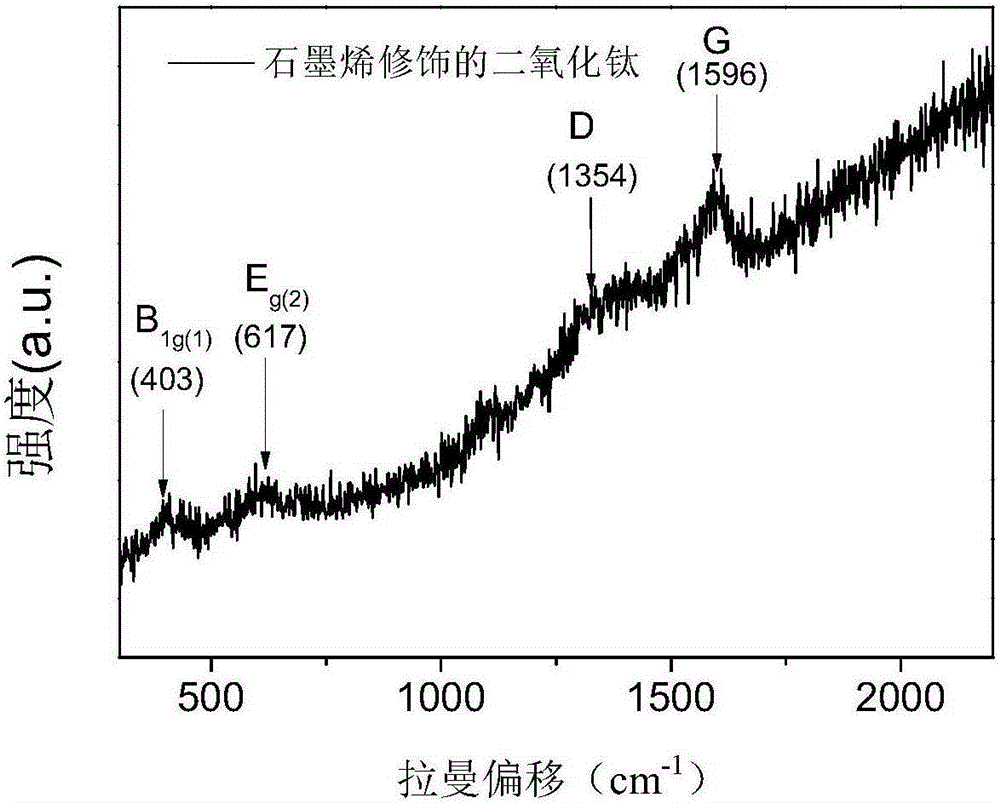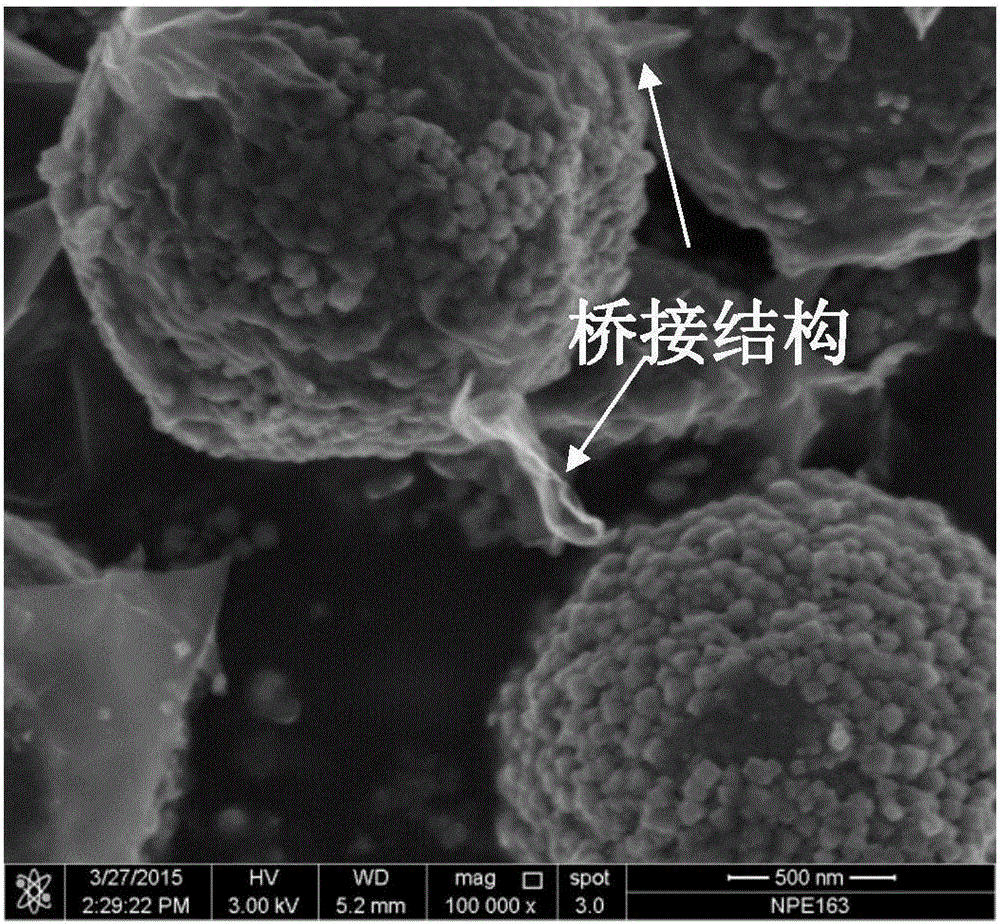Ammonia gas sensor and preparation technology thereof
An ammonia gas sensor and a preparation process technology, applied in directions such as material resistance, can solve problems such as unstable response, and achieve the effects of fewer preparation steps, high conductivity and simple process
- Summary
- Abstract
- Description
- Claims
- Application Information
AI Technical Summary
Problems solved by technology
Method used
Image
Examples
Embodiment 1
[0036] The ammonia gas sensor includes a gas-sensing material and a substrate, the gas-sensing material is evenly coated on the surface of the substrate, the composition of the gas-sensing material includes graphene-modified titanium dioxide composite nanoparticles with a bridging structure, and the coating thickness of the gas-sensing material is 0.4- 0.5 μm. Graphene-modified titanium dioxide composite nanoparticles with a bridging structure, including graphene and titanium dioxide, the bridging structure means that graphene is bridged between the titanium dioxide, and the graphene accounts for 4.7% of the mass fraction of the composite nanoparticles, The preparation method comprises the following steps:
[0037] Step 1, prepare titanium dioxide microsphere particles: dissolve 5.3g of hexadecylamine (hexadecylamine) in 800ml of absolute ethanol (ethanol), then add 3.2ml of KCl (0.1mol / L) solution, in a water bath stirrer at room temperature Stir, add 17.6ml of isopropyl tit...
Embodiment 2
[0047] The ammonia gas sensor comprises a gas-sensitive material and a substrate, the gas-sensitive material is evenly coated on the surface of the substrate, the gas-sensitive material composition includes graphene-modified titanium dioxide composite nanoparticles with a bridging structure, the gas-sensitive material The coating thickness is 0.4-0.5 μm. Graphene-modified titanium dioxide composite nanoparticles with a bridging structure, including graphene and titanium dioxide, the bridging structure means that graphene is bridged between the titanium dioxide, and the graphene accounts for 1.9% of the mass fraction of the composite nanoparticles, The preparation method comprises the following steps:
[0048] Step 1, prepare titanium dioxide microsphere particles: dissolve 5.3g of hexadecylamine (hexadecylamine) in 800ml of absolute ethanol (ethanol), then add 3.2ml of KCl (0.1mol / L) solution, in a water bath stirrer at room temperature Stir, add 17.6ml of isopropyl titanate ...
Embodiment 3
[0055] A novel ammonia gas sensor, comprising a gas-sensing material and a substrate, the gas-sensing material is evenly coated on the surface of the substrate, the gas-sensing material composition includes graphene-modified titanium dioxide composite nanoparticles with a bridging structure, the The coating thickness of the gas-sensitive material is 0.4-0.5 μm. Graphene-modified titanium dioxide composite nanoparticles with a bridging structure, including graphene and titanium dioxide, the bridging structure means that graphene is bridged between the titanium dioxide, and the graphene accounts for 9.0% of the mass fraction of the composite nanoparticles, The preparation method comprises the following steps:
[0056] Step 1, prepare titanium dioxide microsphere particles: dissolve 5.3g of hexadecylamine (hexadecylamine) in 800ml of absolute ethanol (ethanol), then add 3.2ml of KCl (0.1mol / L) solution, in a water bath stirrer at room temperature Stir, add 17.6ml of isopropyl ti...
PUM
| Property | Measurement | Unit |
|---|---|---|
| thickness | aaaaa | aaaaa |
| particle diameter | aaaaa | aaaaa |
| quality score | aaaaa | aaaaa |
Abstract
Description
Claims
Application Information
 Login to View More
Login to View More - R&D
- Intellectual Property
- Life Sciences
- Materials
- Tech Scout
- Unparalleled Data Quality
- Higher Quality Content
- 60% Fewer Hallucinations
Browse by: Latest US Patents, China's latest patents, Technical Efficacy Thesaurus, Application Domain, Technology Topic, Popular Technical Reports.
© 2025 PatSnap. All rights reserved.Legal|Privacy policy|Modern Slavery Act Transparency Statement|Sitemap|About US| Contact US: help@patsnap.com



